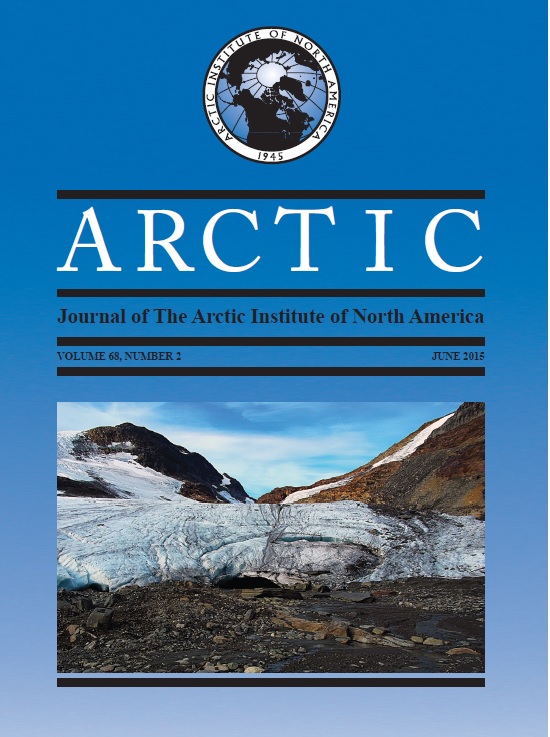Identification of Potential Foraging Areas for Bowhead Whales in Baffin Bay and Adjacent Waters
DOI:
https://doi.org/10.14430/arctic4488Ключевые слова:
foraging, bowhead whale, Balaena mysticetus, satellite telemetry, SLTDR, Baffin Bay, climate changeАннотация
The bowhead whale (Balaena mysticetus) is the Arctic’s largest and most dependent predator on zooplankton; however, knowledge about its important foraging areas in Baffin Bay and adjacent waters is limited. Data on movement, horizontal velocity (ms-1), dive depth (m), and dive rate (dives h-1) were obtained from 39 bowhead whales (31 females, 6 males, and 2 of undetermined sex) instrumented with satellite-linked time-depth recorders (SLTDRs) in spring 2009 and 2010 in Disko Bay, West Greenland. Thirty-eight whales provided information on dive rates and movement, and potential foraging areas were identified on the basis of low dive rates and stationary behaviour. Nine potential foraging areas were identified: Disko Bay and adjacent region, Clyde Inlet, Isabella Bay, Broughton Island, Cumberland Sound, Frobisher Bay, Hudson Strait, southern Foxe Basin, and northern Foxe Basin. Two females returned to Disko Bay the following spring (duration of tags > 420 days). Their diving behavior indicated that all whales exhibited a large degree of flexibility in their use of potential feeding areas in Baffin Bay and adjacent waters. The variability of habitat selection may buffer against climate-induced changes in the preferred habitats of bowhead whales.Загрузки
Опубликован
2015-06-05
Выпуск
Раздел
Articles


